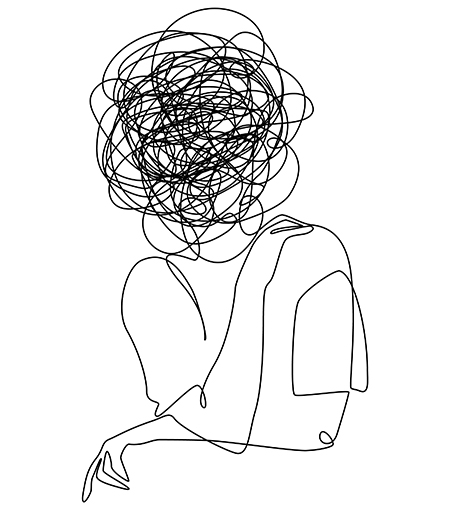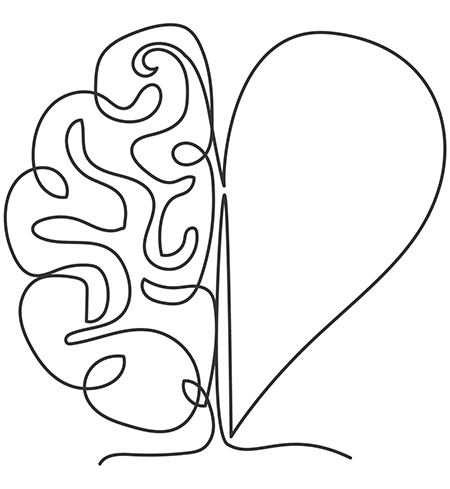 Bad experiences often follow you like the plague.
Bad experiences often follow you like the plague.
What counts as bad? The trauma you faced may have been a “Big T” trauma (like witnessing a fatal car accident) or a “Little T” trauma (like someone breaking your car window).
Trauma can also be anything that happens in between.
It’s upsetting when it happens and can impact you physically, mentally, and emotionally for years after.
You’ve probably noticed things like…
Difficulty sleeping…
Distraction…
Issues with eating…
Disturbing memories and images…
Nightmares…
Guilt…
Gasping when you’re scared or caught off-guard…
Unfortunately, this list of “negative symptoms” goes on and on, and any of them can make it hard to get through your day.
 Well, have no fear… EMDR is here!
Well, have no fear… EMDR is here!
EMDR is a therapy for treating past trauma. It can help you heal from bad experiences, whether they just happened or happened decades ago.
EMDR is a treatment proven effective for trauma, anxiety, grief, depression, chronic pain, and other obstacles that negatively impact your mental health.
EMDR stands for Eye Movement Desensitization and Reprocessing… I know, a total mouthful. Why does it help? It is a great treatment option for people struggling with past trauma.
The goal is to help people heal from bad experiences, whether that is more recent or from the distant past. This process is for people who feel stuck due to their bad experiences.
I will help you understand the connection between the bad experience and your negative symptoms in our work together. Once that connection is determined, you will be guided through the EMDR protocol to reprocess the bad experience safely so you can talk about it without being overwhelmed.
You may have had a bad experience that impacted you emotionally. You likely started to have “negative symptoms,” such as poor sleep, feeling distracted, over- or under-eating, bad memories/images, nightmares, feelings of guilt, or your body “jumping” when a door slams… the list goes on and on and is very personal.
Why would you want to get rid of these negative symptoms? These symptoms suck and often make you have difficulty staying focused at work, feel disconnected from your friends and family, and may cause problems at school and other areas of your life.
Thanks to EMDR, these symptoms can be addressed in an eight-step protocol to help you overcome the bad experience while relieving yourself of the negative symptoms.
 A special program will give you relief from the past.
A special program will give you relief from the past.
There are Eight Phases to EMDR. History taking and treatment planning, preparation, assessment, desensitization, installation, body scan, closure, and reevaluation:
- Phase 1: Your history is discussed, and a treatment plan is developed with attention to the pacing of therapy and the selection of traumatic events that will be part of treatment. In addition, the client’s internal and external resources are assessed.
- Phase 2: In the preparation phase, the therapist explains the EMDR therapy process and terms and sets expectations. The therapist and client collaborate in preparing specific techniques to cope with any emotional disturbance that might come up.
- Phase 3: In assessment, the event to reprocess (also known as the target event) is identified, along with images, beliefs, feelings, and sensations about the event. Initial baseline measures are set by using tools
- Phase 4: In desensitization, the side-to-side eye movements, sounds, or taps are begun while focusing on the traumatic event. New thoughts, sensations, images, and feelings may emerge during this time.
- Phase 5: When desensitization is complete, installation begins. In this phase, the client associates and strengthens a positive belief with the target event until it feels completely true.
- Phase 6: During the body scan, the client is asked to hold in mind the target event and the positive belief while scanning the body from head to toe. Any lingering disturbance from the body is reprocessed.
The last two phases ensure safety for you at the end of a current session and the beginning of the next session:
- Phase 7: Every reprocessing session ends with the seventh phase, closure, in which the client is assisted to return to a state of calm in the present moment, whether the reprocessing is complete. Reprocessing of an event is complete when the client feels neutral about it.
- Phase 8: Reevaluation is how each new session begins after reprocessing. The client and therapist discuss recently processed memories to ensure that distress is still low and positive cognition are still strong. Future targets and directions for continued treatment are determined.
It’s time to lighten your load!
Once you understand the connection between bad experiences of the past and your negative symptoms, you can reprocess the event in a safe environment – one where you can talk about it without getting upset or triggered.
With EMDR, we can transform the meaning of the experiences so that you have a healthier and more adaptive perspective to move past what’s holding you back.
It would be my honor to be your guide.
Please reach out today to schedule your free consultation: (615) 437-7191.
